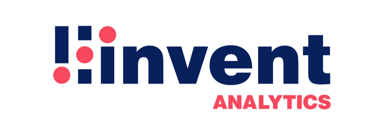HR Metrics
Modern HR departments are now strategic partners in driving organizational success. HR metrics are at the heart of this transformation. They help measure what's working, figure out what's not, and make smart calls about managing people.
But what exactly are "HR metrics"? And how can they make a difference in your company? Let's explore this game-changing aspect of HR management. ⭐️
HR Metrics Definition
HR metrics are quantifiable measures that are used to track the performance of an organization’s human resources. They provide data on employee performance, engagement, productivity, and overall organizational health.
Purpose of HR Metrics
HR metrics are essential tools that help organizations:
- Make smarter decisions: Putting numbers to HR activities allows for choices based on solid evidence rather than gut feelings.
- Show value: These metrics help prove how HR programs actually boost the company's bottom line, customer happiness, and overall success.
- Spot trends: It's possible to pick up on workforce patterns, like changes in employee behavior or team makeup, before they become obvious.
- Benchmark performance: Comparing HR performance to other companies or industry standards reveals areas of excellence and improvement opportunities.
- Improve employee experience: Understanding what employees need and want helps create a better work environment and boost job satisfaction.
- Control costs: Metrics help trim HR spending without sacrificing quality.
- Ensure compliance: Data can be used to verify adherence to rules and regulations, avoiding potential legal issues.
What do HR Metrics Measure?
HR metrics give a comprehensive view of what's really going on with a company's workforce. They measure factors like👇:
- How well employees are doing their jobs
- If the hiring process is actually bringing in good people
- Whether folks are sticking around or heading for the exit
- If training programs are worth the time and money
- How people feel about their paychecks
- Whether the HR department itself is pulling its weight
Basically, these numbers help paint a picture of how the human side of the business is doing overall.
Key HR Metrics
Let's take a look at specific HR metrics in more detail👇:
Recruitment and Hiring Metrics
- Time-to-fill: The average number of days it takes to fill an open position.
- Cost-per-hire: The total cost of recruiting and hiring a new employee.
- Quality of hire: A measure of how well new hires perform and contribute to the organization.
- Offer acceptance rate: The percentage of job offers accepted by candidates.
- Employee Retention and Turnover Metrics
- Employee Turnover rate: The percentage of employees leaving the organization within a specific period.
- Employee tenure: The average length of time that employees stay with the organization.
- Resignation rates: The number of employees voluntarily leaving.
Performance Management Metrics
- Performance ratings: Employee performance against established criteria.
- Goal achievement: Employees meeting their performance objectives.
- Employee development: Participation in training and development programs.
- 360-Degree Feedback Scores: Comprehensive feedback from multiple sources on employee performance.
Compensation and Benefits Metrics
- Salary trends: Salary increases and market competitiveness.
- Benefits participation: The percentage of employees using offered benefits.
- Compensation-to-performance ratio: The correlation between pay and performance.
- Pay Equity: Ensuring fair compensation across gender, race, and other demographic factors.
HR Efficiency Metrics
- HR operating costs per employee: The HR department's expenses per employee.
- HR case resolution time: The average time taken to address employee inquiries.
- Time spent on administrative tasks: The effectiveness of HR processes.
- HR Technology Adoption Rate: The percentage of employees actively using HR technology solutions.
Advanced HR Analytics
HR metrics are the foundation, but advanced HR analytics is where the real magic happens. ✨
Predictive Analytics in HR
Predictive analytics uses historical data to predict future HR trends. This usually includes predicting employee turnover, identifying potential leaders and candidates, and improving hiring strategies.
People Analytics
People analytics is a broader term. It focuses on analyzing data related to employees to improve HR decision-making. It includes various aspects like workplace planning, talent management, text analytics, and organizational effectiveness.
How to Use HR Metrics
Having a pool of HR data and turning it into actionable insights is very important. Here's how to effectively apply HR metrics 👌:
- Set clear objectives. Define what you want to achieve with HR metrics. Are you aiming to improve recruitment efficiency, boost employee retention, or enhance overall performance?
- Choose the right metrics. Select metrics that meet your organizational goals and provide meaningful insights. Avoid data overload by focusing on key performance indicators (KPIs).
- Establish benchmarks. Compare your HR metrics to industry standards or historical data to identify areas for improvement.
- Communicate effectively. Share HR metrics with stakeholders, including management and employees.
- Take action! Use HR metrics to identify trends, root causes, and opportunities for improvement. Implement targeted initiatives based on data-driven insights.
Collecting and Reporting HR Metrics
Accurate and consistent data collection is necessary for reliable HR metrics. Here are the key steps 📌:
- Identify data sources: Where is the HR data stored? (like HRIS systems, performance management tools, and employee surveys)
- Data cleaning: Is the data accurate, consistent, and complete? If not, remove errors.
- Choose reporting tools: Are the software or tools appropriate to analyze HR metrics? (e.g., Excel, data visualization platforms, HR analytics software)
- Create informative reports: Are the reports clear and do they effectively communicate key findings to stakeholders?
Common Pitfalls in HR Metrics and How to Avoid Them
HR metrics are powerful tools, but they can also be misleading if they are not handled carefully.👌 Here are potential pitfalls to watch out for:
- Overreliance on Quantitative Data: Balance quantitative metrics with qualitative metrics for a fuller picture.
- Neglecting Privacy and Ethics: Make sure that all data collection and analysis comply with privacy laws and ethical standards.
- Measuring the Wrong Things: Focus on metrics that truly matter to your organization's success, not just what's easy to measure.
- Ignoring Context: Consider external factors and organizational changes when interpreting metrics.
- Analysis Paralysis: Don't get stuck in data – use metrics to drive action, not just for analysis.
Emerging Trends in HR Metrics
The HR metrics scene is constantly evolving. Key trends to watch include 👇:
- HR technology: Using HR software and tools to systematize data collection and reporting processes.
- Wellbeing and Mental Health Metrics: Growing focus on measuring employee wellbeing and mental health factors.
- Real-Time Analytics: Moving from periodic reporting to continuous, real-time data analysis.
- AI and Machine Learning: Leveraging advanced algorithms for deeper insights and predictions.
- Employee Experience Metrics: Focusing more on measuring and improving the overall employee journey.
- Diversity, Equity, and Inclusion (DEI) Metrics: Increasing emphasis on tracking and improving DEI initiatives.
HR Metrics Tools and Software
The right tools can significantly enhance your HR metrics journey. Here are popular options 👩💻:
- HRIS (Human Resource Information Systems): HRIS systems collect and store employee information, making it easier to extract and analyze metrics.
- Performance Management Software: This software offers data on performance ratings, goal achievement, and employee development. It is used to set goals, track performance, and provide feedback.
- Survey Tools: They help collect employee feedback on satisfaction, engagement, and other factors to measure employee experience metrics.
- HR Analytics Software: Specialized tools designed to analyze HR data.
- Applicant Tracking Systems (ATS): Applicant Tracking Systems like Hirex streamline the recruitment process by centralizing candidate information. These tools provide invaluable insights into metrics such as time-to-fill, cost-per-hire, and quality of hire.
Remember: The best tool for you will depend on your organization's size, budget, and specific needs. Consider factors like ease of use, data integration capabilities, and reporting functionality when selecting!
HR metrics are more than just numbers; they're your secret weapon for unlocking your workforce's full potential. With the power of data, HR can become a strategic partner, driving real change and optimizing performance. Ready to transform your function? Your data-driven HR journey starts now! 🚀
Get a demo
- Quickly find top candidates with smart application management
- Improve team collaboration using built-in communication and workflows
- Offer a smooth candidate experience to strengthen your employer brand
- Count on 24/7 support for a hassle-free hiring process
- Quickly find top candidates with smart application management
- Improve team collaboration using built-in communication and workflows
- Offer a smooth candidate experience to strengthen your employer brand
- Count on 24/7 support for a hassle-free hiring process
"We truly felt the speed difference. Everything was smoother, and candidate feedback was much more positive. It made our jobs easier."

Trusted by 100+ teams
Get Informed,F.A.Q.
Revolutionize your hiring process with our transformative Applicant Tracking System (ATS.)
Suggested keywords
What is Cultural Fit?
Let's talk numbers - 89% of employers put cultural fit at the top of their hiring checklist. Pretty huge. But wait a second... what exactly does cultural fit mean in today's fast-moving workplace?The ...
Employee NPS Benchmarks
An Employee NPS benchmark is basically a way to see how your company’s employee satisfaction stacks up against others. It helps turn your eNPS score into something useful by giving it context. 📌You'r...
Salary Benchmarking
Salary benchmarking is basically figuring out if what you're paying your team makes sense compared to what others are offering for similar roles. It’s like checking the going rate before you buy somet...















